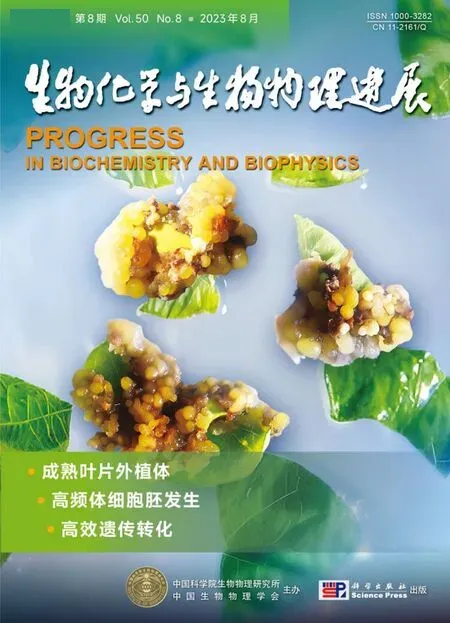The Connotation of Traditional Chinese Medicine on Anti-aging and Skin Whitening
2023-03-07XIAOJia
Lycium barbarumis a traditional Chinese medicinal plant that has been widely used as a functional food and dietary supplement.Lycium barbarumpolysaccharide (LBP) is an important active substance found inLycium barbarum[1]. It has been recorded in the “Ben Cao Gang Mu(Compendium of Materia Medica)” to have anti-aging and skin whitening effects. Previous studies have focused on its antioxidant properties to explain its efficacy[2]. However, the scientific understanding of the anti-aging and skin whitening effects of LBP,especially the underlying mechanisms, is still unclear.Wuet al.(Prog Biochem Biophys, 2023, 50(8): 1926-1936. DOI: 10.16476/j.pibb.2023.0219) investigated the new function and mechanism of LBP1C, which is extracted fromLycium barbarum. This specific extract was found to delay cell senescence by promoting autophagy, thereby achieving the effects of anti-aging and skin whitening. As the era of aging approaches, the development of anti-aging drugs and strategies is now more focused on promoting healthy aging[3]. This study demonstrated that LBP1C improved the motor ability ofC. elegansduring aging, promoting healthy aging. Mechanistically,LBP1C increased autophagy by promoting TFEB nuclear translocation, while reducing the accumulation of SASP and lipofuscin in cells andC.elegans. These findings provide new scientific evidence for understanding the efficacy of “skin whitening”. With age, the malfunctioning of autophagy can lead to the loss of proteostasis.Therefore, exploring direct modulators of autophagy is a promising approach for geroprotective interventions[4]. LBP1C, as a natural autophagy activator, shows potential application prospects in this field.
This study has revealed the potential of LBP1C extracted fromLycium barbarumin terms of antiaging and skin whitening effects by activating autophagy. These findings provide a scientific and theoretical foundation for further research in clinical applications. ConsultingLycium barbarumas a medicinal and food source offers promising opportunities for translation. However, despite the credible and comprehensive research conducted by Wuet al., there are still certain unresolved issues. For example, the mechanism by which LBP1C regulates TFEB nuclear translocation requires further exploration, and the effects of LBP1C on humans remain unexplored. In conclusion, this study utilizes modern scientific technology to elucidate the principles of traditional Chinese medicine. Given the contemporary need for healthy aging, the potential application of LBP1C is tremendous, offering exciting prospects for following translational studies.
